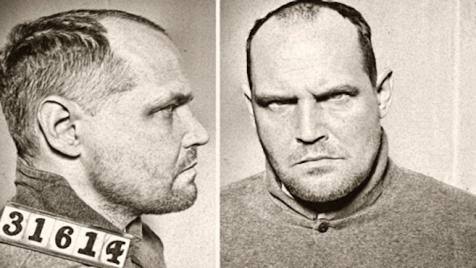The Writer and A Serial Killer

Jefferson Rhoades
His real name was Carl Panzram. He was a tattooed man, 1.82 meters tall, and with cold gray eyes.
Born in 1891 to a poor agricultural family in Minnesota, Panzram's father abandoned his family when he was about eight years old. Soon after, Panzram arrived at a reformatory called Red Wing for a series of robberies. Red Wing educated Panzram in sadism, by punishing him with beatings and rapes, which led him to realize: "The world is this shit, and I'm going to go into the world and wreak havoc on it," said Harold Schechter, a writer specializing in true crimes of serial killers.
After Graduation
After graduating, he spent years sleeping on freight trains. During a ride in a freight car, he was raped by passersby, leaving him as "a sad, sick, but wiser child," wrote Panzram. In 1915, he traveled through Idaho, California, and other states along the Columbia River, burning and robbing buildings and raping countless young men and boys. At the same time, Panzram was sentenced to
seven years in the Oregon State Penitentiary for robbery. To punish his indiscipline, the guards hung him from rafters for hours, hosed him down with water, and kept him in solitary confinement for weeks, leaving him to feed on cockroaches.
Murder
Shortly after escaping in 1918, Panzram committed his first murders. In New York, he hired ten sailors to work on a boat bought with the largesse of a robbery, helped them fall asleep with alcohol, and shot and killed them, all of them. Soon after, he sailed for Angola, but first raped and killed a child before starting a crocodile hunting expedition that would end with a genocide of people shot to death. A year later, he hid on a ship bound for Lisbon, only to find that the police were looking for him, aware of his crimes in Africa. So soon after, he stowed away on a ship to the US.
In 1928
In 1928, Panzram was arrested for a series of robberies and imprisoned in Washington. After the prison director learned that he had tried to escape, the guards handcuffed him and suspended him from a beam, where they beat him unconscious. Feeling sorry for Panzram, 26, a prison guard named Henry Lesser handed him a dollar to buy food and cigarettes. "No one had ever been kind to him in his entire life," said John Borowski, who directed the 2012 documentary "Carl Panzram: A Spirit of Hate and Vengeance." Over time, the two became friends. Each day, Lesser slipped him a pencil and a few sheets of paper, persuading him to write his life story.
Sentenced
Panzram was sentenced to 25 years in the Leavenworth United States Penitentiary in Kansas. There, he smashed the skull of Robert Warnke, the laundry foreman, with an iron bar. After the incident, he was transferred to death row and denied the help of human rights groups to avoid being hanged. After years of abuse, "this was his way of committing suicide," Borowski said. Panzram got the death he longed for in September 1930. "Hurry, you bastard!" He said to the executioner. "Rage personified," as he referred to himself to the end. "I could kill 10 men while you're still there!"
Writing
Lesser kept Panzram's writings. Publishers weren't comfortable with the graphic manuscript until 1970 when it was published as Killer: A Journal of Murder. "The guy was really an amazing writer," said Joe Coleman, who did the cover for the book, and who was "blown away by the intelligence and the things that Panzram might have been able to do." Beyond helping criminologists better understand the minds of killers like Panzram, Borowski said the autobiography serves as a lesson that still has relevance amid recent reports of prisoner abuse on Rikers Island and other prisons. "It is about teaching
our future generations not to create more monsters like him, "he said, adding that Panzram," above all others, must be heard. "

 My First News Item
My First News Item My Nine News Item
My Nine News Item